Students from School of Mobile Information Engineering won prizes in TIIC 2015 National Undergraduate IoT Design Contest
Source: School of Mobile Information Engineering
Written by: Wang Chaoying, Zeng Zhaoyang, Chen Xiaoxuan
Edited by: Wang Dongmei
On September 24-26, 2015, the final contest of the TIIC 2015 National Undergraduate IoT Design Contest was held in Wuxi. 950 teams from 310 universities registered for the competition. Three teams consisting of undergraduate students from the School of Mobile Information Engineering at Sun Yat-sen University (SYSU) won two first prizes and one second prize in the final contest. SYSU was awarded the excellent organizing prize.
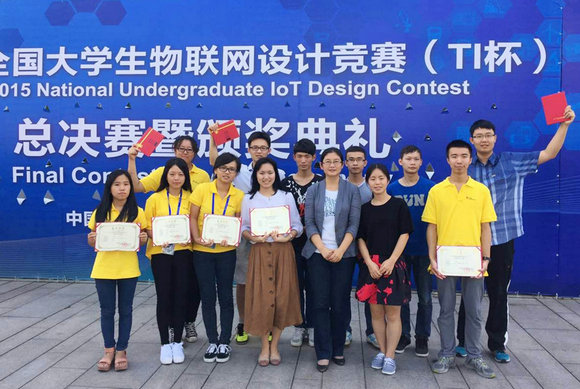
Group photo of the award-winning students from the School of Mobile Information Engineering of SYSU
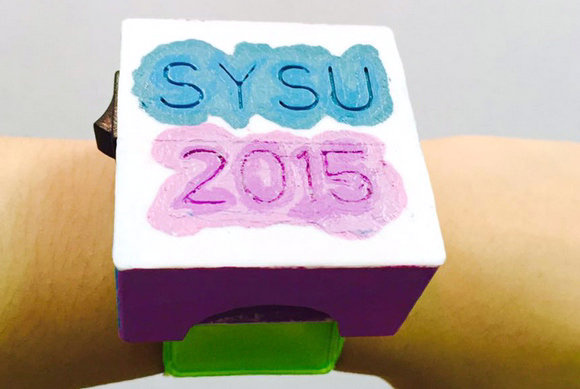
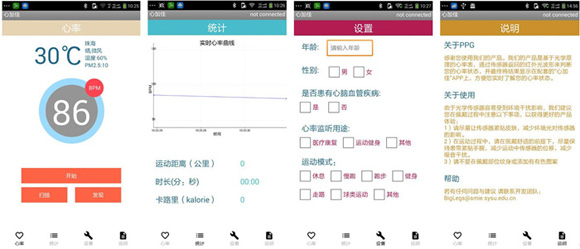
"A HeartRate Monitor based on PPG signals" receives first prize.
"A HeartRate Monitor based on PPG signals" designed by undergraduates Wang Chaoying, Liu Jian, Liang Qiaosheng and Wu Xiaoyue won first prize. The eternal pursuit of health weighs heavily on every human’s mind, so is heart rate, a significant indicator and measure of human’s health status. Up to now, heart-rate monitoring technology has been adapted for a wide variety of medical and social purposes. As a refined technology in medical field, it promotes clinical diagnosis and intensive care. It also plays an irreplaceable role in human’s daily life, such as in physical training, exercising and health fitness. With the development of Photoplethysmographic (PPG), it is much easier to acquire reliable and accurate data of heart rate with a lighter and wearable sensor, making heart-rate monitoring technology accessible to anyone. Intelligent terminals such as cloud platforms or smart phones acquire PGG signals from sensors and show users the messages of their heart rates on the App after a complex process, including Bandpass Filtering, Singular Spectrum Analysis, Frequency Extraction, Multiple-way Prediction and Selection and so on. Meanwhile, they deliver messages of users’ heart rates and health status to a cloud platform, where users’ information will be stored to predict and diagnose diseases through big data analysis in the future. Therefore, patients are able to seek proper treatments before it is too late and doctors can suit the remedy to the case more efficiently. Moreover, it gives advice to users on how to live a healthy life of high quality based on the information of their heart rates. Thus, photoplethysmographic technology is of huge potential and bright prospects.
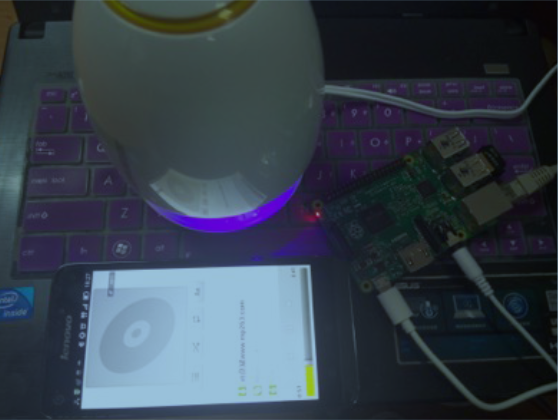
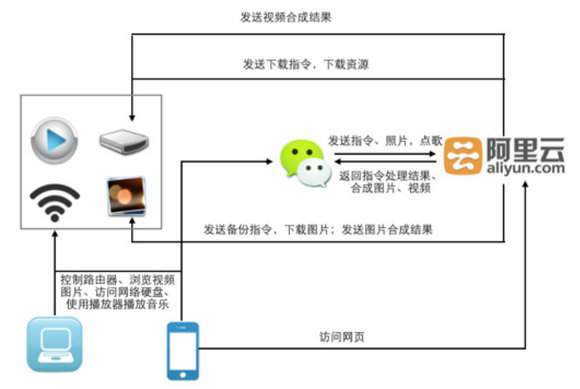
"A Home Entertainment System Base on WeChat" receives first prize.
"A Home Entertainment System Base on WeChat" designed by undergraduates Zeng Zhaoyang, Wu Lulu, Zeng Liyi and Yang Jianfei won first prize. The product, an intelligent router based on OpenWrt system, is managed with WeChat platform and contains most of the base functionality, such as remote download, fast synchronization and sharing of photos, and it also includes some special functions like Airplay player. Taking the router as the center of the home-area network, users can remotely control it through WeChat to download movies or other resources in advance, update and share photos with friends and enjoy the happiness of beautifying pictures and making videos rapidly in WeChat, experiencing perfect pleasure from the integrated family entertainment system. Technically speaking, the product adopts customized platform management and connects with Aliyun cloud server, making sure that each router is unique with the classic functions.
"E-Helmet" receives second prize.
"E-Helmet" designed by undergraduates Chen Xiaoxuan, Chu Ying, Jiang Xin and Wu Binglong won second prize. E-Helmet is a smart device based on bluetooth communication, which can make users have a good enjoyment out of holding mobile phone through the connection with the mobile phone APP. The designers realize the function of listening to music, answering phone calls, voice self navigation by using built in earphone and microphone through bluetooth module to free our hand, ensure driving safety and convenience. At the same time, the use of RFID detection distance and RF signal transmission between the tag and reader can achieve anti-theft function and automatic lock function. In addition, for safety considerations, the helmet installs an acceleration sensor, when the sensor reaches a certain threshold, the phone calls the setting phone automatically and sends the current location.
The TIIC National Undergraduate IoT Design Contest, hosted by Higher Education Committee in Computer Major of the Ministry of Education, and co-organized by Texas Instruments (TI), is a national contest for university students in China. With the policy of “serving for education, collaborating with industries” and the purpose of encouraging creativity, the contest emphasizes originality and engineering ability, providing support for the education of IoT engineers and the implementation of the “Outstanding Engineers Plan”.
